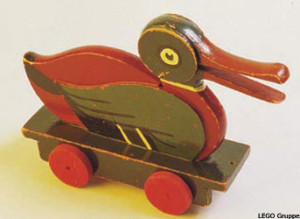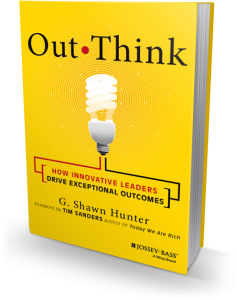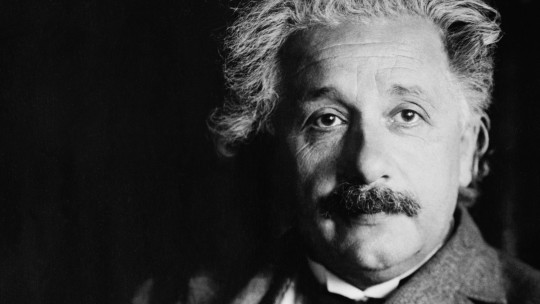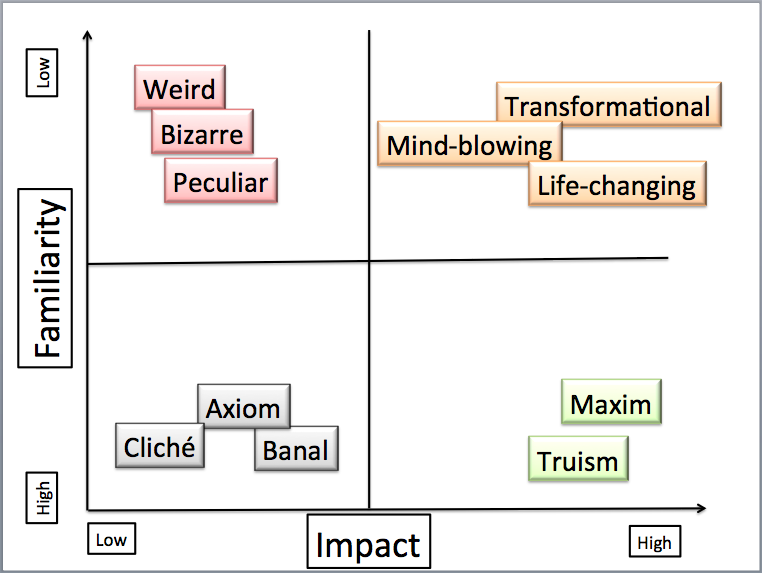What’s Your OQ? (Originality Quotient)
There are many echoes in the world, but few true voices.
We are all standing on the shoulders of giants, borrowing brilliance, hopefully adding value along the way, and constantly making a positive difference. The difference between real originality and blatant rip-off is the extent to which we make it our own, the extent to which we take the basic building blocks and circumstances presented, and create new value, new innovation.
However, it’s not enough to be original simply for the sake of being original. High originality without impact is just weird. Like this hamburger scented candle. This motorcycle lawn mower might be somewhere lost in the middle between cool, and actually usable. It might get some teenagers to mow the lawn, but maybe only once or twice before the novelty wears off.
On the other hand, low originality without adding any value is a straight up swindle, or worse, fraud. Katie Perry released the copycat hit “Roar” three months after Sara Bareilles released “Brave.” You can hear them both overlayed together here. Ms. Bareilles is being very kind and generous to Ms. Perry in the press about it. Sara Bareilles is saying copycat work is a good thing because it raises everyone up. Maybe, but it’s still not innovation. There’s a reason why The Monkees never became The Beatles.
 Or for a business example, in the 1930s a Danish woodworker was making wooden toy ducks and calling them LEGOs. That’s right, toy ducks was the main product line of LEGO. Meanwhile in the UK, Kiddicraft released their “Self-Locking Bricks” in 1940. Then, almost ten years later, in 1949 LEGO released their now-famous “Building Blocks” known the world over. And I would argue LEGO in fact did add value by offering the market reach and visibility that Kiddicraft couldn’t. The Self-Locking Bricks might have been lost forever. Or not. We’ll never know for sure.
Or for a business example, in the 1930s a Danish woodworker was making wooden toy ducks and calling them LEGOs. That’s right, toy ducks was the main product line of LEGO. Meanwhile in the UK, Kiddicraft released their “Self-Locking Bricks” in 1940. Then, almost ten years later, in 1949 LEGO released their now-famous “Building Blocks” known the world over. And I would argue LEGO in fact did add value by offering the market reach and visibility that Kiddicraft couldn’t. The Self-Locking Bricks might have been lost forever. Or not. We’ll never know for sure.
Here’s one way to think about it: Consider the intersection between Familiarity and Impact. On the chart below, low Familiarity and low Impact = the hamburger-scented candle. High Impact and high Familiarity = a refrigerator, for example.
The pinnacle of life-changing, mind-blowing, and transformational originality is the intersection of low Familiarity and high Impact. The original iPhone, when released in 2007, meets that criteria. My favorite here is the alarm-clock-rug that only deactivates when you get out of bed and step on it. Genius.
Sometimes mind-blowing and transformational precedes the mundane. We went to the moon before we put little wheels on our luggage. Who knew? At the moment I’m inclined to believe self-driving cars might be the next game-changing social development. What do you think?
[I credit this entire idea to my friend and colleague Louis Biggie, who first suggested the idea of Originality Quotient to me several months ago. Bravo.]
- Join my Email updates for regular updates on leadership and life
- Learn more about my Speaking work
____________________________________________________
 Shawn Hunter is the author of Out•Think: How Innovative Leaders Drive Exceptional Outcomes. It’s about how to lead joyfully in life, and also to lead cultures in your company to drive great results.
Shawn Hunter is the author of Out•Think: How Innovative Leaders Drive Exceptional Outcomes. It’s about how to lead joyfully in life, and also to lead cultures in your company to drive great results.
Twitter: @gshunter
Say hello: email@gshunter.com
Web: www.shawnhunter.com





